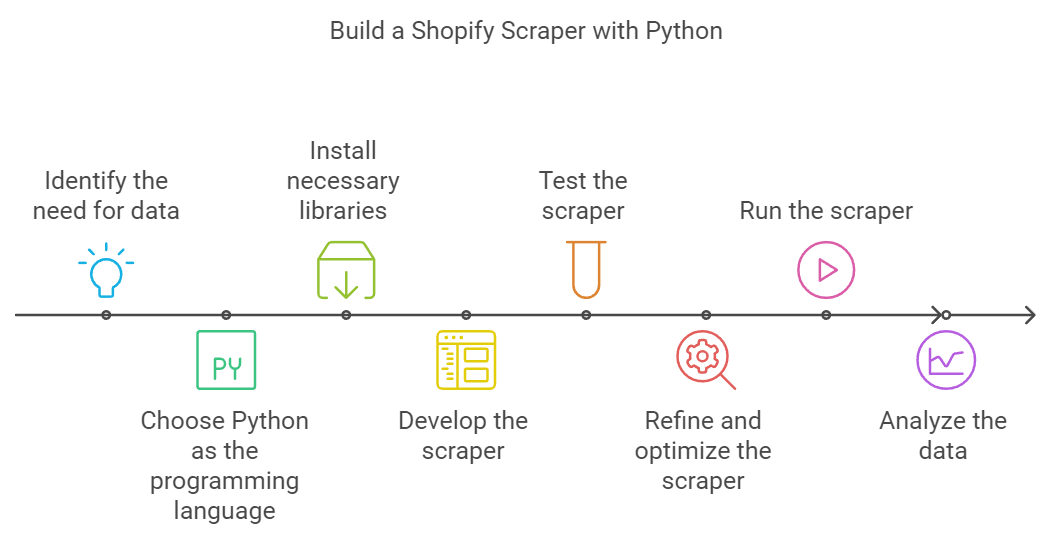How to Develop a Shopify Scraper Using Python
Web scraping is a powerful technique to extract data from websites. If you're looking to gather information from Shopify stores, developing a Shopify scraper using Python can be a great solution. This guide will walk you through the basics of creating a Shopify scraper, including the tools you'll need and best practices to follow.

Why Develop a Shopify Scraper?
Shopify is one of the most popular e-commerce platforms, hosting millions of online stores. Scraping data from Shopify stores can provide valuable insights for market research, competitor analysis, and more. By automating the data extraction process, you can save time and gather large amounts of data efficiently.
Tools You'll Need
- Python: The programming language we'll use for scraping.
- BeautifulSoup: A library for parsing HTML and XML documents.
- Requests: A library for making HTTP requests.
- Pandas: A library for data manipulation and analysis.
Step-by-Step Guide
Step 1: Install Required Libraries
First, you need to install the necessary libraries. You can do this using pip:
pip install requests beautifulsoup4 pandasStep 2: Make an HTTP Request
Use the requests library to fetch the HTML content of the Shopify store page you want to scrape.
import requests
url = 'https://example-shopify-store.com'
response = requests.get(url)
html_content = response.textStep 3: Parse the HTML Content
Use BeautifulSoup to parse the HTML content and extract the data you need.
from bs4 import BeautifulSoup
soup = BeautifulSoup(html_content, 'html.parser')
# Example: Extract product titles
product_titles = soup.find_all('h2', class_='product-title')
for title in product_titles:
print(title.text)Step 4: Store the Data
Use Pandas to store the extracted data in a structured format, such as a CSV file.
import pandas as pd
data = {'Product Title': [title.text for title in product_titles]}
df = pd.DataFrame(data)
df.to_csv('shopify_products.csv', index=False)Best Practices
- Respect the website's
robots.txtfile and terms of service. - Implement rate limiting to avoid overwhelming the server with too many requests.
- Use user-agent strings to mimic a real browser and avoid detection.
- Handle exceptions and errors gracefully to ensure your scraper runs smoothly.
Conclusion
Developing a Shopify scraper using Python can be a valuable skill for anyone interested in data extraction and analysis. By following the steps outlined in this guide, you can create a basic scraper to gather data from Shopify stores. Remember to always respect the website's terms of service and implement best practices to ensure ethical scraping.
Happy scraping!